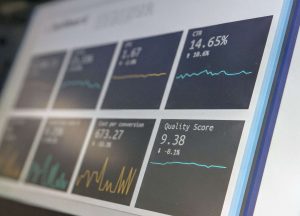In today’s digital age, the significance of ensuring the security of digital assets cannot be overstated. The threats in the online landscape are continuously evolving, and cyber attackers are always looking for potential vulnerabilities. Protecting these assets is paramount, from personal data and intellectual properties to critical financial records. One of the primary tools available for this purpose is DLP Software, which plays a pivotal role in maintaining the sanctity of digital possessions.
Understanding Digital Assets
Before diving into the protection strategies, one should understand what digital assets encompass. These are any digital files or information stored electronically. This includes but is not limited to documents, photographs, videos, and even digital currencies. With the ever-increasing volume of digital data, the challenges associated with maintaining their security have also grown.
The Growing Need for Digital Asset Security
Cyber threats have become more sophisticated. Gone are the days of amateur hackers trying their luck. Now, organized cybercrime syndicates with significant resources target organizations and individuals, aiming to steal valuable data. The aftermath of a successful cyber attack can be devastating, leading to financial loss, legal complications, reputational damage, and more.
Moreover, the regulatory landscape has also evolved. Many jurisdictions now have stringent data protection laws, requiring companies to ensure the security of the personal information they handle. Failing to comply can result in heavy penalties, not to mention the loss of trust among stakeholders.
Embracing DLP Software
DLP, or Data Loss Prevention Software, has become one of the go-to solutions for organizations aiming to protect their digital assets. This software is specifically designed to detect potential breaches in data transfer and prevent unauthorized data leakage. Here’s a brief look at how DLP Software aids in ensuring digital asset security:
1. Real-time Monitoring: One of the fundamental features of DLP Software is its capability to monitor data in real-time. This constant vigilance ensures that any suspicious activity is quickly identified, allowing prompt corrective actions.
2. Data Classification: Not all data is of equal value. DLP Software classifies data based on sensitivity, ensuring more critical data receives higher security levels.
3. Policy Enforcement: Companies can customize policies according to their needs. For instance, they can restrict sharing of sensitive documents outside the organization’s network. DLP Software enforces these policies seamlessly.
Beyond DLP Software: Comprehensive Digital Asset Security
While DLP Software is undeniably a significant asset in the arsenal against cyber threats, mastering the art of digital asset security requires a more holistic approach. Some additional strategies include:
1. Regular Updates and Patches: Outdated software can have vulnerabilities that cyber attackers exploit. Regularly updating all software and applying security patches is crucial.
2. Employee Training: Many breaches occur due to human errors. Offering regular training sessions to educate employees on the importance of digital security, the potential risks, and the best practices can significantly reduce such incidents.
3. Multi-Factor Authentication: Instead of relying solely on passwords, implementing multi-factor authentication offers an additional layer of security. Even if a password is compromised, unauthorized access can still be prevented.
4. Backup and Recovery: While prevention is crucial, preparing for the worst-case scenario is equally essential. Regularly backing up digital assets ensures that data can be quickly restored in case of an incident.
5. Incident Response Plan: Every organization should have a well-defined incident response plan. This plan outlines the steps to be taken if a security breach occurs, ensuring swift action and minimizing potential damage.
Harnessing Encryption Techniques: In an age where data breaches have become alarmingly frequent, encryption has emerged as a hero. Converting data into a code ensures that only those with the correct decryption key can access it. This means that even if data gets into the wrong hands, it remains unreadable and, thus, unusable. Modern encryption algorithms are robust and can defend against most cyber threats.
Regular Security Audits: Conducting periodic security audits is akin to a health check-up for an organization’s digital infrastructure. These audits delve deep into the system to identify any potential weak points, outdated software, or vulnerabilities that might be exploited. By recognizing these issues early on, companies can proactively remedy them before malicious actors control them. Security audits also help comply with evolving data protection regulations, ensuring that the organization stays on the right side of the law.
Final Thoughts
In the digital era, the importance of safeguarding assets must be stressed more. As cyber threats become more advanced, the strategies to counter them must also evolve. While DLP Software plays an instrumental role in this protective shield, a comprehensive approach integrating various strategies will always be the most effective. Regular audits, employee training, and staying updated with the latest security trends are all part and parcel of mastering the art of securing digital assets. In doing so, organizations protect their investments and build trust and credibility among their stakeholders.





